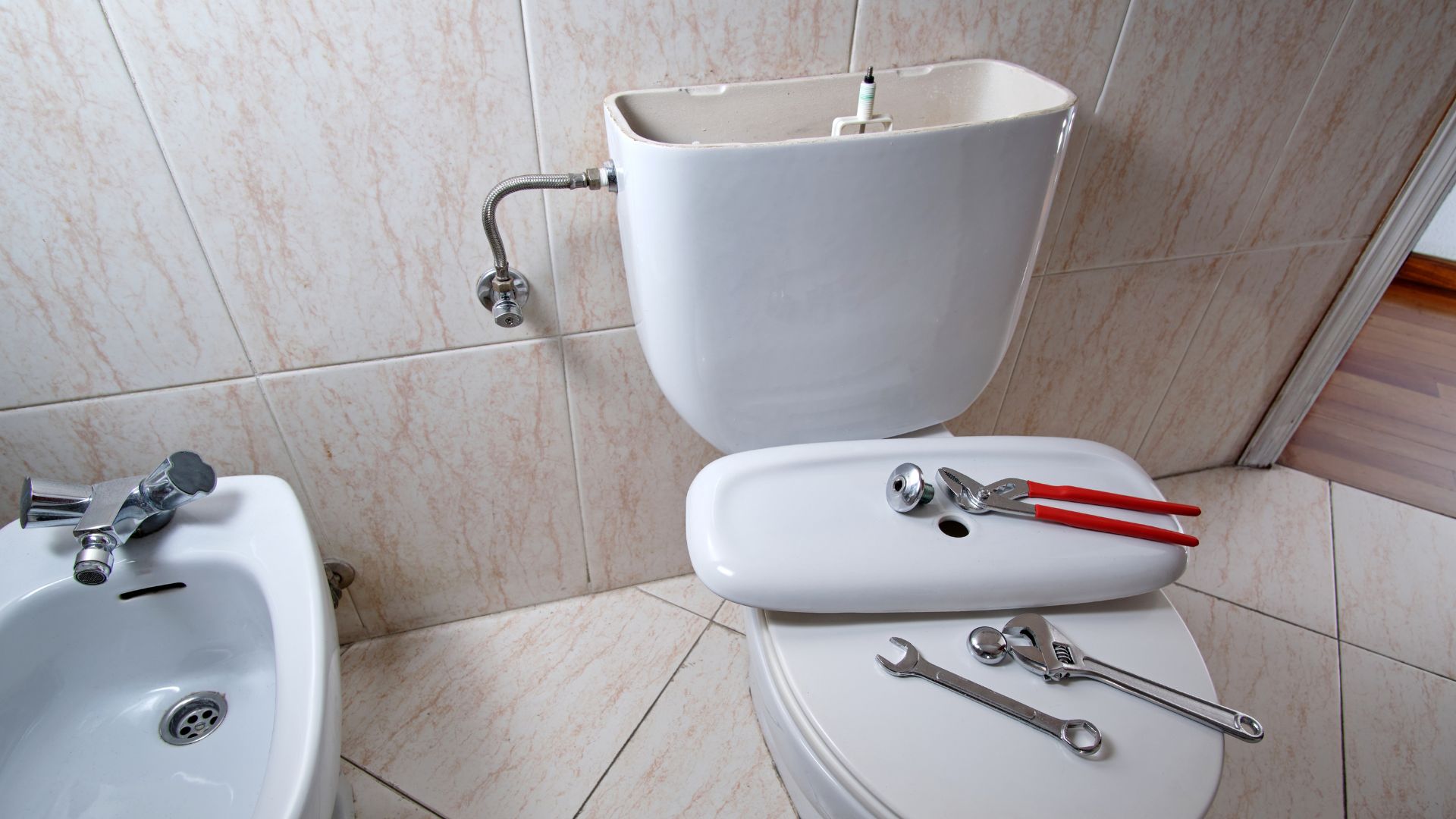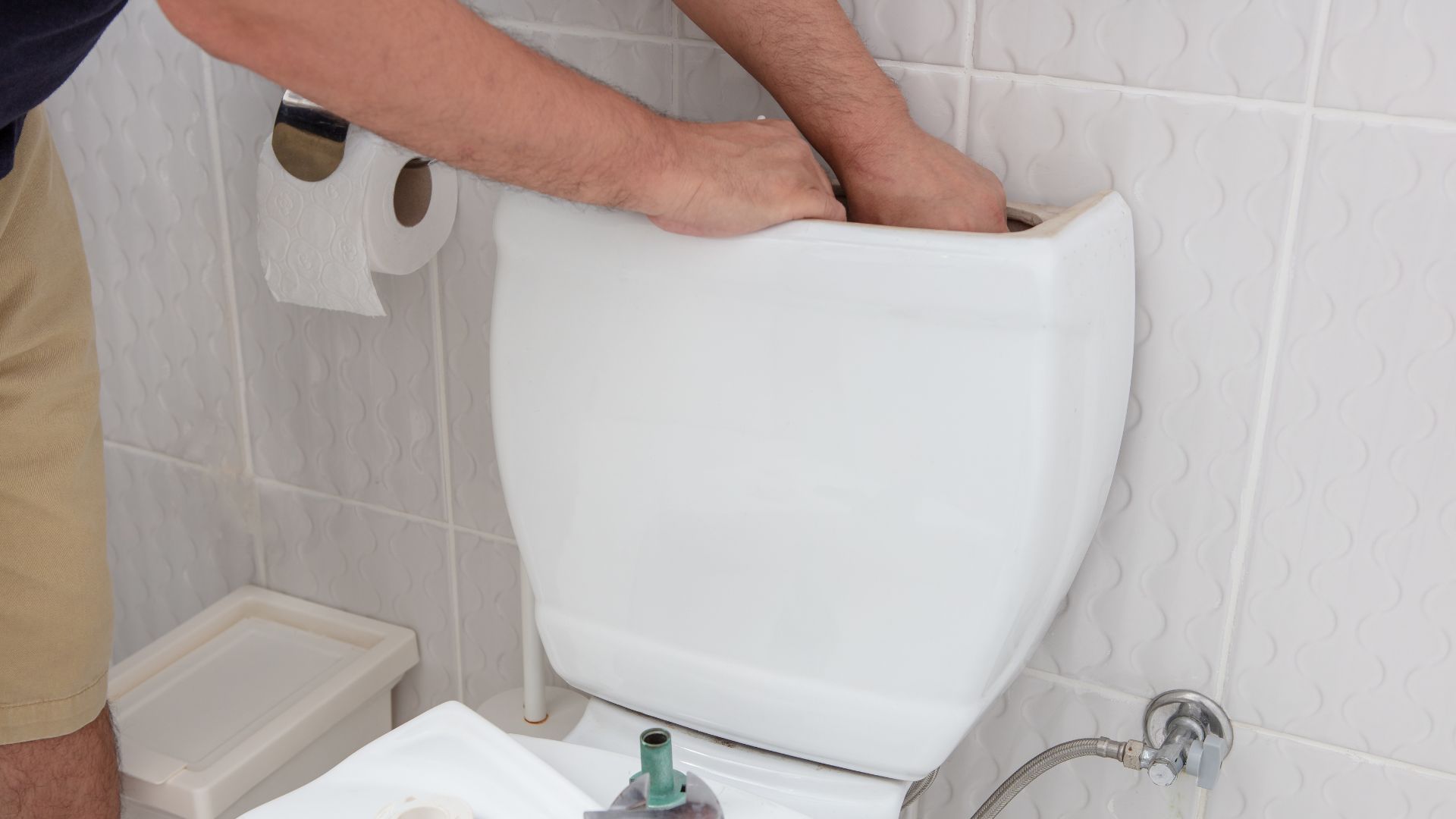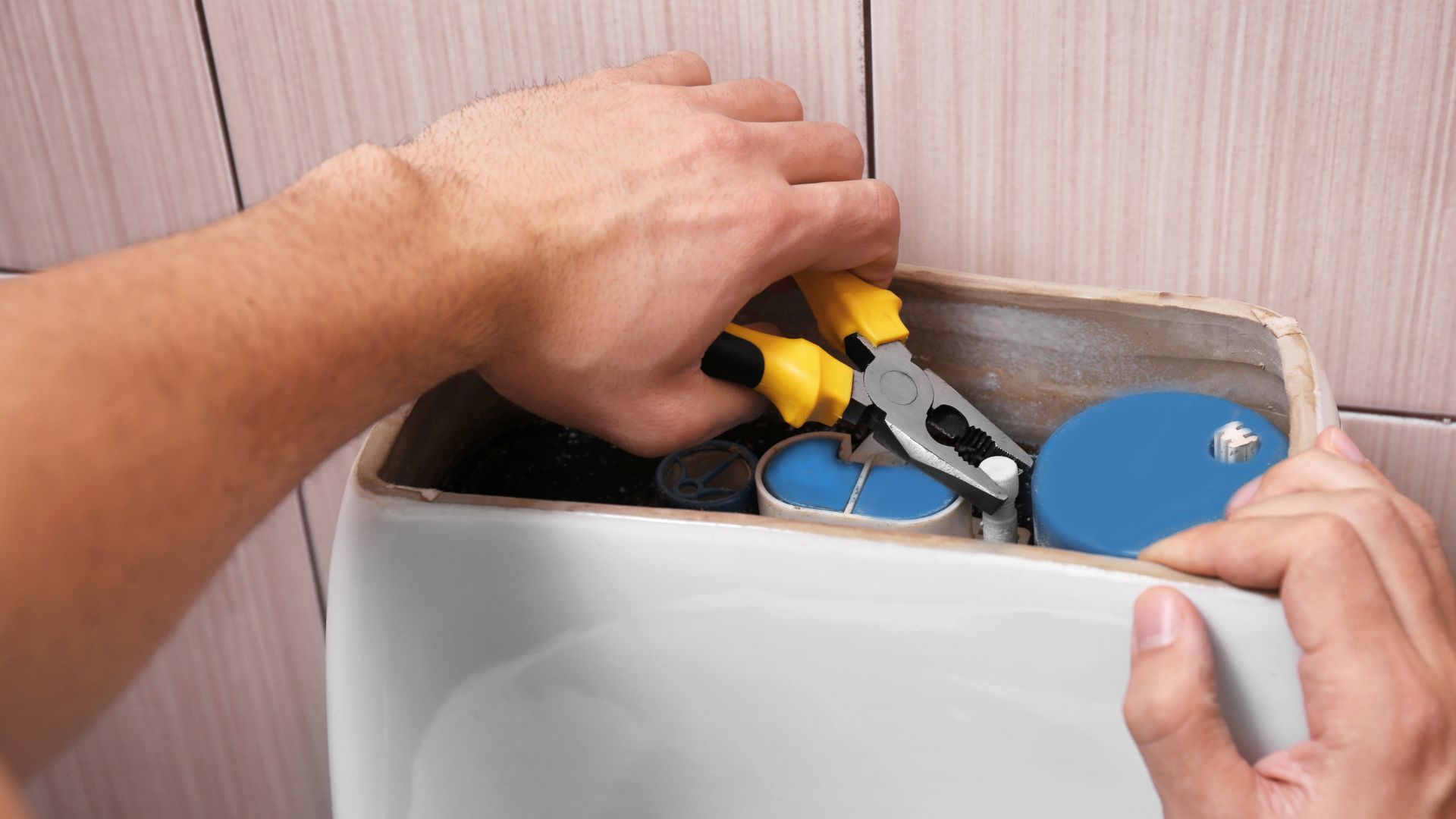A single leaking toilet cistern can waste over 300 litres of water every day—often without you noticing until the water bill shows up. That kind of hidden leak doesn’t just drain your wallet; it also puts unnecessary strain on water resources.
The toilet tank is key to how efficiently your toilet bowl flushes. When the flush mechanism inside the tank fails, water can continue to run or refill incorrectly. That’s why understanding how your cistern works—and knowing what to look for when things go wrong—can make a big difference.
We’ll discuss practical maintenance tips, common warning signs, and a few simple DIY fixes that will help you keep your toilet in good working order.
How a Toilet Cistern Works and Its Key Components

A sanitary toilet tank might seem like a simple fixture, but inside, it’s a cleverly designed system that manages every flush with precision. Understanding how it works gives you a big advantage when spotting problems early or doing basic repairs.
Here’s a quick look at the key components inside your flush mechanism:
- Inlet Valve: This valve controls the flow of water into the tank after each flush. It opens to refill the tank and shuts off once the right level is reached.
- Float Mechanism: Attached to the inlet valve, the ball float rises with the water level and signals when to stop refilling. If it’s set incorrectly or gets stuck, the tank may overfill or underfill.
- Flush Valve: This releases the stored water into the toilet bowl when the flush button is pressed. A worn valve can lead to constant leaks or weak flushing.
- Overflow Tube: A safety feature that directs excess water into the bowl if the tank overfills, preventing spills onto the floor.
- Tank Lid and Seal: The lid protects internal parts from dust and damage, and the rubber seal beneath it helps keep everything watertight.
Once flushed, the tank empties, the inlet valve reopens, and the process starts again. Modern cisterns are designed to conserve water but rely on regular care to work efficiently. Even a tiny issue can cause unnecessary water loss or flushing problems.
Common Toilet Problems That Start in the Cistern
Many common toilet problems begin inside the toilet cistern, often going unnoticed until they start affecting performance—or your water bill. Since the sanitary toilet tank controls every flush, even minor faults in its internal components can lead to wasted water, weak flushes, or annoying noises.
Here are some issues to look out for:
- The toilet won’t stop running: This is often caused by a worn flush valve or a poorly adjusted float valve, which allows water to flow constantly into the toilet bowl.
- Weak flush or incomplete flush: When the fill valve fails to refill the tank properly or the flush valve doesn’t seal correctly, you’ll notice a lack of power in each flush.
- Strange hissing or trickling sounds: These noises often indicate a blocked or faulty inlet valve that is not closing off the water supply as it should.
- Tank refills slowly: A clogged or partially blocked inlet valve can cause slow refilling after each flush.
- The water around the toilet base could signal cracks in the tank, a loose seal under the cistern, strong water pressure or issues with internal fittings.
Toilet Cistern Maintenance Tips for Homeowners

Staying on top of the cleaning process is easier than most people think. A quick monthly check or regular cleaning can help prevent common issues and keep your cistern refills running smoothly. Here’s a simple step-by-step guide:
- Please turn off the water supply. Locate the isolation tap near the base of the toilet and shut it off before opening the cistern. This stops fresh water from flowing in while you work.
- Lift the tank lid carefully: Gently remove the lid and place it on a soft surface to avoid cracks or chips.
- Clean inside the toilet tank: Wipe down the inside walls with a soft sponge and a mild cleaner— salt, vinegar and baking soda work well—to remove grime and prevent mineral deposits from affecting parts like the inlet valve and float valve.
- Avoid bleach tablets or harsh chemicals: These can corrode internal fittings and damage components like the flush valve.
- Inspect the internal parts: Check the float valve, flush valve, and inlet valve for signs of wear, mineral build-up or sticking. Replace anything that looks worn or isn’t moving freely.
Making this a regular habit can help you avoid leaks, save on water, and extend the life of your toilet cistern.
How to Tackle Stubborn Stains Inside the Toilet Tank
Stubborn stains inside the cistern might look concerning, but they’re usually simple to fix with a proper deep clean. These stains can interfere with the cistern’s filling, affect valve movement, and even trap unpleasant odours and bacterial growth that linger near the toilet seat.
Follow these easy bathroom cleaning steps:
- Turn off the water supply and remove the tank lid carefully.
- Mix white vinegar with warm water for a safe, effective cleaner—skip the harsh chemicals and toilet tablets.
- Scrub gently using a toilet brush or soft cloth. Avoid wire brushes, which can damage surfaces.
- Inspect internal components for any build-up that might lead to a weak flush or impact your plumbing system.
- Flush the toilet a few times to rinse, then replace the lid.
Doing this as part of your regular maintenance helps extend the life of your entire toilet, including concealed cisterns. It ensures every toilet flush is clean and efficient—even after all that toilet paper use.
Adjusting Water Levels to Prevent Excess Water Usage
If your toilet flushes too weakly or uses too much water, the water level inside the toilet cistern may need adjusting. This simple task improves water efficiency, supports water conservation, and helps your bathroom’s functionality overall.
Follow these steps to get it right:
- Remove the tank lid and locate the float valve or float cup that controls the water level.
- Observe the water level; it should sit below the overflow tube when the cistern is full.
- Adjust the float using the screw or clip, depending on your model, to raise or lower the level.
- Turn the water supply back on and allow the cistern to fill.
- Flush the toilet to test if the adjustment has improved performance.
Keeping water levels in check prevents pressure on the internal components, reduces wear and tear, and ensures every flush contributes to better water conservation without sacrificing performance.
Replacing Worn Parts Inside the Toilet Cistern

Over time, the internal components inside your toilet cistern can wear out, causing ongoing leaks, weak flushes, or noisy refills. Replacing parts like the inlet valve, seals, or flappers can restore your bathroom’s functionality and improve water efficiency.
Here’s a step-by-step guide to replacing worn parts:
- Turn off the water supply and flush the toilet to empty the cistern.
- Carefully remove old or damaged components, such as the inlet valve or flapper, without forcing anything.
- Fit the new parts by following the manufacturer’s instructions—make sure everything is aligned and secured correctly.
- Turn the water back on and let the toilet cistern fill.
- Test the flush to ensure the repair has solved the issue and the system refills smoothly.
Using quality replacement parts can extend the life of your toilet and help avoid frequent toilet repairs. Contacting a licensed plumber is a good idea if you’re working with concealed cisterns or an older model. A professional can ensure the repair fits within your existing plumbing system and avoids further issues.
Preventative Maintenance Tips for a Trouble-Free Cistern
Staying ahead of toilet troubles starts with a few simple habits. These preventative steps help your toilet cistern remain reliable and efficient over time:
- Inspect internal parts every two months for signs of wear, mineral build-up or sticking.
- Keep the area around the toilet base dry to spot leaks early and avoid water damage.
- Avoid slamming the tank lid shut, as it can loosen seals or crack the sanitary toilet tank.
- Watch for slow refills or odd sounds, which may signal issues with the inlet or flush valve.
Even small cracks or loose fittings inside the cistern can lead to bigger plumbing problems if left unchecked. Keep a simple reminder on your calendar for a quick quarterly inspection. This easy routine can prevent costly repairs and keep your toilet performing at its best.
When It’s Time to Call a Professional
While many homeowners can handle basic maintenance, not every issue is a quick DIY fix. Call a professional plumber if you still encounter problems after replacing parts, notice water pooling at the base, or see cracks in the cistern. Lingering odours or irregular water levels also indicate something isn’t working correctly.

An expert can catch potential problems early, especially the ones hiding behind more common toilet problems. They’ll fit quality parts, restore proper function, and help avoid bigger repairs. Getting professional help if your toilet is older or part of a larger bathroom upgrade is a good practice.
A Little Cistern Care Goes a Long Way
Regular toilet cistern maintenance isn’t just a chore—it’s a smart way to protect your plumbing system, save water, and avoid those all-too-common toilet headaches. Taking just a few minutes every couple of months to clean and inspect the tank can prevent surprise leaks, keep things working correctly, and stop your water bill from creeping up.
Not sure where to start? Or suspect your toilet needs more than a wipe-down? That’s where we come in.
If you’re dealing with a noisy flush or a leaking toilet cistern, the licensed team at Big Blue Plumbing is ready to help. From stubborn drips to full cistern replacements, we’ve got the know-how, the right tools, and the experience to get the job done properly the first time.
We service homes across the South East Queensland region with professional care and long-term solutions you can rely on. Contact Big Blue Plumbing today, and let us help you keep your toilet running smoothly, clean, and stress-free.



